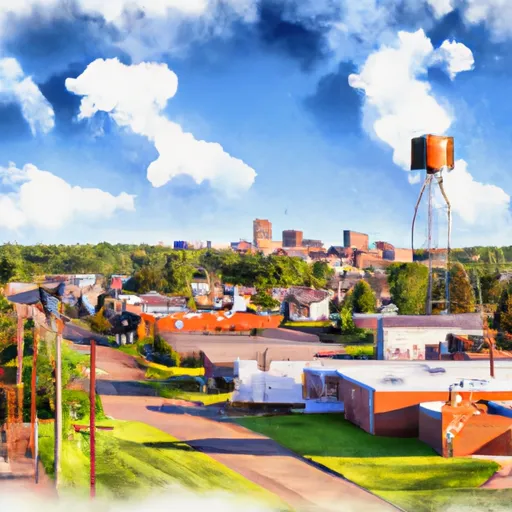-
 Snoflo Premium
Snoflo Premium
Get unlimited access to all our content
With no Ad interruptions! - Start Your Free Trial Login with existing account
Garrison
Eden Index
Climate
5.4
•
Recreation
3.8
•
Community
•
Safeguard
3.5/10

Garrison is a small town in central Minnesota. The climate in Garrison is characterized by cold winters and warm summers. The area receives an average of 32 inches of rainfall per year. The hydrology constituents of Garrison are primarily made up of the Mille Lacs Lake, which is a popular destination for fishing and boating. The lake is home to a variety of fish species, including walleye, bass, and northern pike. Other outdoor recreation opportunities in Garrison include hiking and birdwatching at nearby state parks, as well as snowmobiling, cross-country skiing, and ice fishing during the winter months.
What is the Eden Index?
The Snoflo Eden Index serves as a comprehensive rating system for regions, evaluating their desirability through a holistic assessment of climate health, outdoor recreation opportunities, and natural disaster risk, acknowledging the profound impact of these factors on livability and well-being.
Climate Health Indicator (CHI): 5.4
Garrison receives approximately
719mm of rain per year,
with humidity levels near 83%
and air temperatures averaging around
5°C.
Garrison has a plant hardyness factor of
3, meaning
plants and agriculture in this region thrive during a short period during spring and early summer. Most
plants will die off during the colder winter months.
By considering the ideal temperature range, reliable water supplies, clean air, and stable seasonal rain or snowpacks, the Climate Health Indicator (CHI) underscores the significance of a healthy climate as the foundation for quality living.
A healthy climate is paramount for ensuring a high quality of life and livability in a region, fostering both physical well-being and environmental harmony. This can be characterized by ideal temperatures, reliable access to water supplies, clean air, and consistent seasonal rain or snowpacks.
Weather Forecast
Streamflow Conditions
Upper Mississippi-Crow-Rum
Area Rivers
Upper Mississippi-Crow-Rum
Snowpack Depths
Upper Mississippi-Crow-Rum
Reservoir Storage Capacity
Upper Mississippi-Crow-Rum
Groundwater Levels
Recreational Opportunity Index (ROI): 3.8
The Recreational Opportunity Index (ROI) recognizes the value of outdoor recreational options, such as parks, hiking trails, camping sites, and fishing spots, while acknowledging that climate plays a pivotal role in ensuring the comfort and consistency of these experiences.
Access to outdoor recreational opportunities, encompassing activities such as parks, hiking, camping, and fishing, is crucial for overall well-being, and the climate plays a pivotal role in enabling and enhancing these experiences, ensuring that individuals can engage in nature-based activities comfortably and consistently.
Camping Areas
| Campground | Campsites | Reservations | Toilets | Showers | Elevation |
|---|---|---|---|---|---|
| Mille Lacs Kathio State Park | 70 | 1,281 ft | |||
| Crosby Memorial Park | None | 1,243 ft | |||
| Big Falls City | None | 1,188 ft | |||
| Cuyuna Country State Park - Portsmouth Campground | 25 | 1,238 ft | |||
| Daly County Park | 86 | 1,037 ft | |||
| Aitkin County Campground | 7 | 1,201 ft | |||
| Bray County Park | 43 | 1,068 ft | |||
| Washburn Lake - Land OLakes State Forest | 30 | 1,347 ft | |||
| Caliper Lake Provincial Park | 83 | 1,111 ft | |||
| Ann Lake - Sand Dunes State Forest | 30 | 990 ft |
Nearby Fishing
Nearby Ski Areas
Catastrophe Safeguard Index (CSI):
The Catastrophe Safeguard Index (CSI) recognizes that natural disaster risk, encompassing floods, fires, hurricanes, and tornadoes, can drastically affect safety and the overall appeal of an area.
The level of natural disaster risk in a region significantly affects safety and the overall livability, with climate change amplifying these risks by potentially increasing the frequency and intensity of events like floods, fires, hurricanes, and tornadoes, thereby posing substantial challenges to community resilience and well-being.
Community Resilience Indicator (CRI):
The Community Resilience Indicator (CRI) recognizes that education, healthcare, and socioeconomics are crucial to the well-being of a region. The CRI acknowledges the profound impact of these elements on residents' overall quality of life. By evaluating educational resources, healthcare accessibility, and economic inclusivity, the index captures the essential aspects that contribute to a thriving community, fostering resident satisfaction, equity, and social cohesion.

